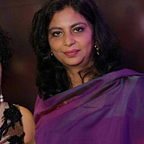The Idea Is…
An idea is a suggestion; a possibility. Ideas have allowed us to escape irrelevance, stagnancy and oppression; and experience the fullness and diversity that is life. But ideas can also be stubborn, fixed and fixated on only one way as the right way…; or simply being fixated on the idea of the right. In short, ideas can be both, the thesis and the antithesis. They can seem to lack principle, come across as frivolous, too irreverent, or random or pointless. And yet, despite the weight some of them apparently lack, they can still provoke strong reactions!
Why do ideas rattle us? Why do they disturb us? Why do we talk about others’ (good/ bad) ideas? Why do they matter? Perhaps ideas challenge our idea of the real, the normal or the desirable? They are infectious and can easily go viral. Before you know it, everyone is talking about an idea and wanting to explore it. Ideas often threaten the social order. When they become an ideology, they can be polarizing and pull people apart. They can destroy organisations, break marriages and ruin families. The status…the accomplishment we aspire for, can be toppled by a mere idea.
Creative work so far, has essentially been about generating and producing ideas. In today’s dynamic contexts, creative work is facing unprecedented challenges. It’s no longer the sole medium by which new ideas enter the collective consciousness. The internet and its algorithm-based platforms help generate likeable content by the second. Idea generation is now democratic and technological. What then is the role of the creative practitioner, the erstwhile producer of ideas?
The most pressing need today, is not the generation of more ideas, but the ability to make sense of an experience-scape inundated with ideas. People do not want more choices; what they seek is direction. They do not want to return to old sentimental fixations of ‘the way’, but to live a life of more promise, more personal meaning. They seek inspiration and counsel from talks, films, from art, from everyday life, from the products they consume and from tragedy and crises. In a world of excess, they seek the most essential values. Creative work is facing an existential crisis. What should it do? How should it be recognized? What interstitial spaces must it pitch itself in? What must it create? And for whom? And for what?
Ideas are no longer the creation of individual genius and its artistic expression or inventiveness. They are imagined, grown and developed collaboratively. They involve a number of stakeholders. Ideas are no longer just created; they are invested in with attention, money and other social processes. They’ve become an inseparable part of our economy. Creative processes thus need to be reviewed; their assumptions and conventions need to be questioned. In other words, the creative process itself, is in need of new ideas. Ideas in a new world can no longer suffice as mere distractions, or gimmicky transgressions. They are assuming a new responsibility- the frivolous must challenge the fixated; the personal must become political; the absurd must identify and challenge the equally absurd, and the present must be liberated by new perceptions and new visions.
“The idea” is stepping out of adolescence and entering adulthood. It is primed for assuming a greater responsibility. Ideas can shape our world, affect our world view, help us re-imagine how we wish to be. The new creative professionals will not be expected so much to generate new ideas, but to identify them, endorse them, to evaluate them, curate them and represent them to a world that is currently in an uneasy relationship with ideas.
Image Source: https://i-d.vice.com/en_uk/article/mb4xyy/how-demna-gvasalia-is-changing-the-world
